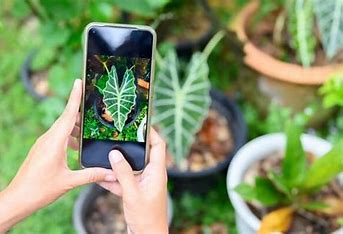Adverts
Have you ever come across a plant that you thought was interesting, but didn’t know its name? Or perhaps you’ve come across a rare plant and wanted to know more about it?
Identifying plants has always been a difficult task for those without specific knowledge of botany, but with technological advances, it is now possible to use a smartphone to learn more about the vegetation around you. In this article, we will explore the best apps for identifying plants, how they work and why they are so useful for everyone, from beginners to gardening experts.
The idea of using an app to identify plants may sound futuristic, but this technology is already accessible to everyone. Using artificial intelligence (AI), these apps are able to analyze photos you take and suggest which plants they might be. Throughout this article, we will explain in detail how these apps work, their benefits, and which one is best for your needs.
The Technology Behind Plant Identification
Plant identification apps use AI and image recognition algorithms to compare the visual characteristics of plants, such as leaves, flowers, and stems, against an extensive database.
When you take a photo of a plant, the app processes the image and looks for similarities with other plants registered in the database. Some of the main features analyzed include:
- Sheet format and size: The structure of the leaves can be one of the main identifiers of a plant.
- Colors and shapes of flowers: Many apps also analyze flowers, when present, to suggest the species.
- Other morphological characteristics: In addition to leaves and flowers, details such as the trunk or branches are also taken into account.
These applications make use of large botanical databases, which are constantly updated, and as more people use the application, the database becomes more robust and accurate.
Benefits of Using a Plant Identifier App
Here are some of the main benefits:
- Ease and Agility: With just a photo, the app provides the identification of a plant in seconds. This saves time and eliminates the need to search for information in books or online.
- Education and Knowledge: Using these apps is a great way to learn about new plants. Each time you use the app, you will become familiar with new species and their characteristics.
- Plant Care: Many apps not only identify plants, but also offer care tips. This is useful for those who want to keep their plants healthy, such as knowing the amount of light, water, and the best type of soil for each species.
- Sustainability and Conservation: Knowing more about the plants around you also helps you understand how to preserve them and even identify endangered or invasive species. This way, you can actively help protect the environment.
- Global Accessibility: Since most of the apps work through your phone, you can use any of them wherever you are, whether in a forest, park or even in your own garden.
FAQ – Frequently Asked Questions
1. How can I be sure the identification is correct? While these apps are very accurate, there is always the possibility of error. To ensure accuracy, be sure to take a clear, sharp photo, focusing on the plant’s main features. If possible, consult other sources to confirm the identification.
2. Are these apps free? Yes, most plant identification apps offer free versions. However, some extra features may only be available in the paid versions.
3. How do I use these apps offline? Some apps offer limited offline functionality, but to perform full identification, most apps require an internet connection.
4. Can I use these apps anywhere? Yes, you can use these apps anywhere in the world as long as you have an internet connection. Some apps also have limited offline functionality.
5. What are the best apps for identifying plants? PlantSnap and PlantNet are two of the best apps, but iNaturalist and Seek by iNaturalist are also great options, especially if you're just starting to learn about plants.
With this information, you’re ready to explore the world of plants in a more practical and fun way. Using a plant identifier app can be a great way to learn about the flora around you, and with the help of technology, it’s never been easier to understand and care for plants better.
